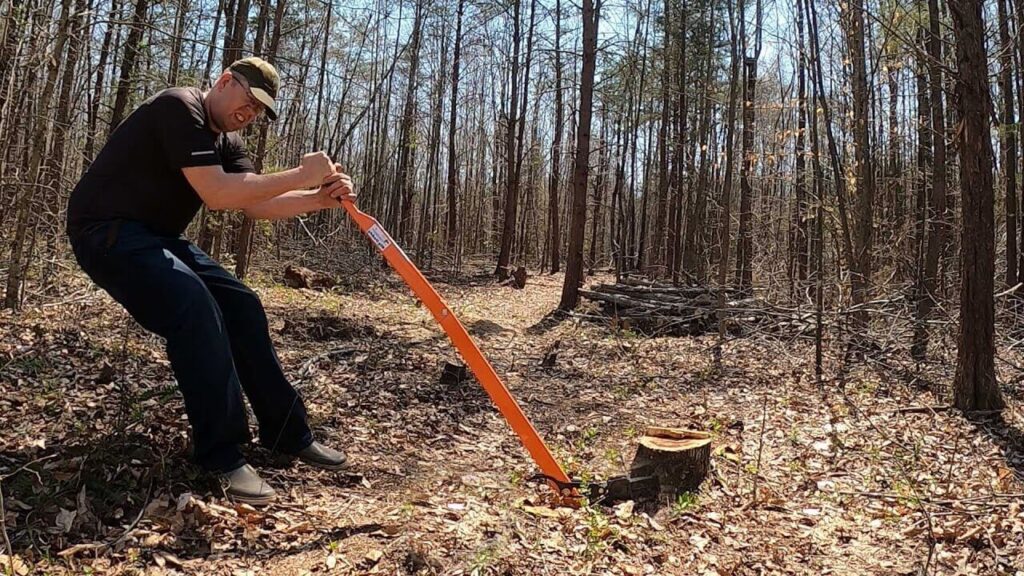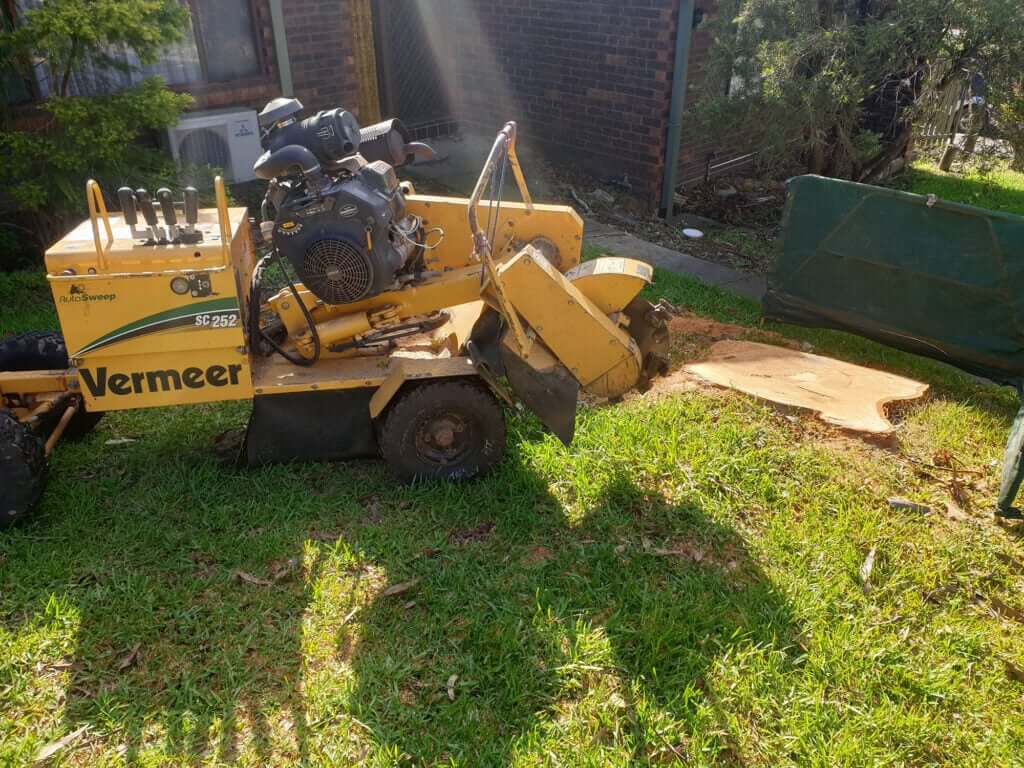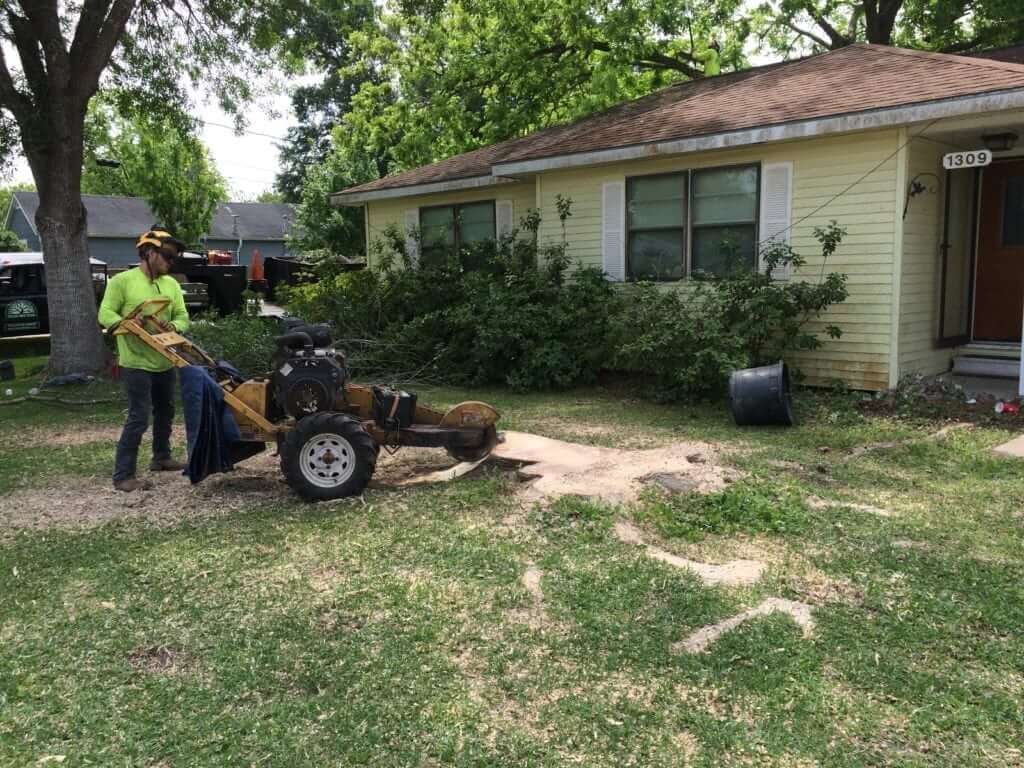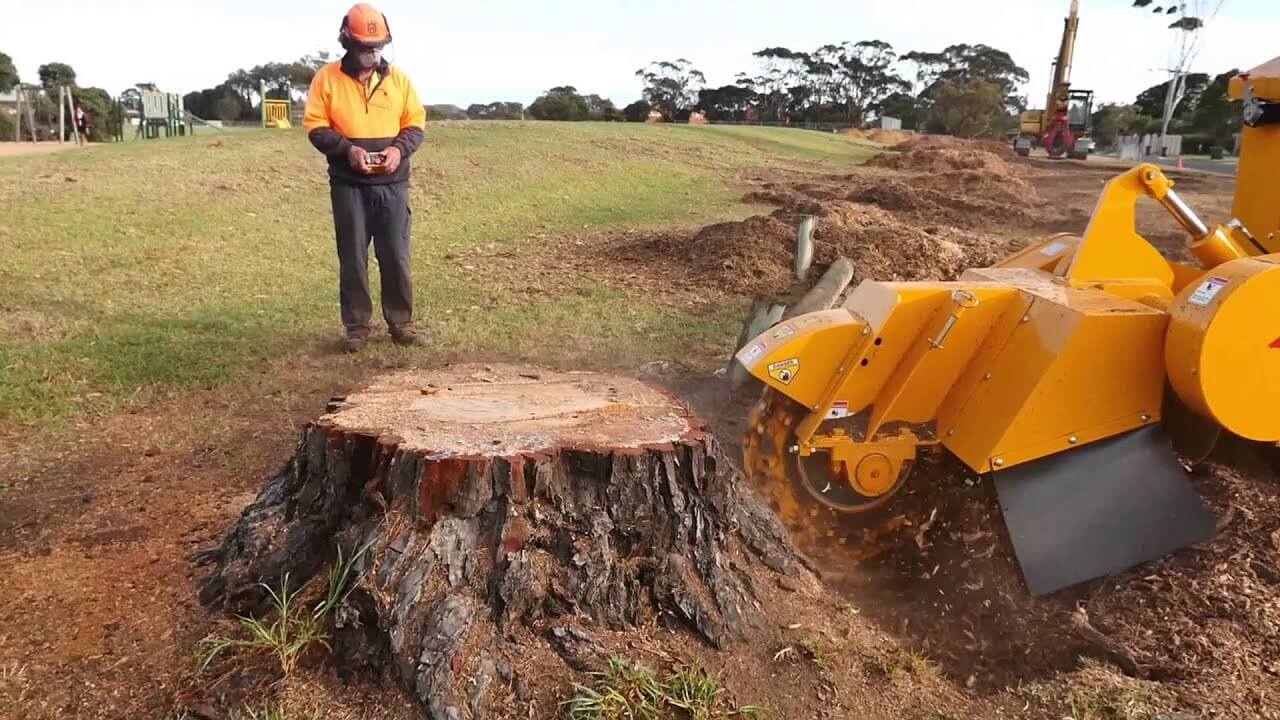Choosing between stump grinding and stump removal can be a significant decision for homeowners looking to revitalize their yards. Both methods have their pros and cons, and knowing which is best suited for your needs is essential. This article will explore both methods thoroughly, allowing you to make an informed choice based on your specific circumstances.
Understanding Stump Grinding
Stump grinding is a process that involves using specialized machinery to chip away the visible part of a tree stump and grind it down into small wood chips. It typically leaves the roots in the ground, allowing them to decompose naturally over time. This method is not only efficient but also environmentally friendly, as it minimizes disruption to the surrounding soil and ecosystem.
The Process of Stump Grinding
The stump grinding process begins with evaluating the stump’s size and condition. Once assessed, a professional will maneuver a powerful stump grinder over the stump, gradually reducing it to mulch. The machine can make its way through various sizes and thicknesses, providing flexibility for different situations. The grinder operates with sharp, rotating blades that can easily slice through hardwood, making quick work of even the most stubborn stumps.
After the grinding is complete, the resulting wood chips can be used as mulch for your garden or disposed of according to your preference. It’s a relatively seamless process that tends to take only a few hours, depending on the size of the stump. Additionally, many companies offer clean-up services, ensuring that your yard is left tidy and free of debris, which is an added convenience for homeowners.

Pros and Cons of Stump Grinding
Stump grinding offers several advantages. Firstly, it is often quicker and less invasive than stump removal. Additionally, it retains the roots in the soil, which can promote soil health as they decompose. Moreover, with the stump ground to chips, you can utilize mulch in your garden, providing nutrients to your plants while suppressing weed growth. This method also reduces the risk of soil erosion, as the remaining roots help to anchor the soil in place.
However, some disadvantages exist. For instance, while stump grinding eliminates the visible stump, the roots remain, which can lead to issues such as regrowth or pest infestation. Additionally, ground stumps can leave a hole in your yard, which may require filling with soil or additional landscaping. Homeowners should also be aware that the area around the stump may need some time to settle after grinding, as the wood chips can decompose and create a depression in the ground.
Cost and Time Considerations for Stump Grinding
When considering stump grinding, it’s essential to evaluate the costs involved. Generally, stump grinding costs can range between $75 to $400, depending on the size and complexity of the stump and the removal from your property. Factors such as accessibility, proximity to structures, and the number of stumps can also influence the overall cost, making it wise to obtain multiple quotes before proceeding.
In terms of time, the process usually takes between one to three hours. It’s a reasonable timeframe compared to the time required for full stump removal, making it an attractive option for many homeowners. Additionally, scheduling a stump grinding service is often straightforward, with many companies offering flexible appointments to accommodate your needs. This efficiency allows you to quickly reclaim your outdoor space for other landscaping projects or recreational use.

Delving into Stump Removal
Stump removal, on the other hand, is a more comprehensive process. It involves not only grinding down the stump but completely extracting it along with the root system. This method ensures that no remnants of the stump remain in your yard, allowing for a more seamless integration into your landscape design.
The Procedure of Stump Removal
The procedure typically starts with digging around the stump to expose the roots. This can be labor-intensive and is often achieved with professional equipment. Once the roots are accessed, they are cut away, and the stump is removed entirely from the ground. The use of specialized machinery, such as excavators or stump pullers, can significantly expedite this process, making it more efficient and less physically demanding.
This process can also be messy; expect a significant amount of dirt and debris. However, it clears the area for future landscaping or construction, providing a clean slate for your yard. Additionally, the removal of the stump and roots can help prevent issues such as fungal growth or insect infestations that may arise from decaying wood, ultimately promoting a healthier garden environment.
Advantages and Disadvantages of Stump Removal
The primary advantage of stump removal is that it entirely clears the stump and roots from your land, preventing any potential for regrowth or pest problems. This method is particularly beneficial for yards where future landscaping plans involve digging or extensive planting. Moreover, without the obstruction of a stump, you have the freedom to design your landscape more creatively, whether that means planting new trees, installing a patio, or creating a garden bed.
However, it does come with drawbacks, including a higher cost and longer duration than stump grinding. The process may take an entire day, depending on the stump’s size, and can become more complex if the roots are intertwined with others in the ground. Furthermore, homeowners should be aware that the area where the stump was removed may require additional landscaping efforts to restore it to its previous aesthetic, such as reseeding grass or planting new flora.
Evaluating the Cost and Time for Stump Removal
Stump removal tends to be more expensive than grinding, with prices generally ranging from $150 to $600. This cost reflects the labor-intensive process and equipment needed for complete removal. Factors such as the size of the stump, its location, and the accessibility of the site can all influence the final price, making it essential to obtain multiple quotes from different service providers.
Moreover, the time commitment may be longer, sometimes extending beyond a day if multiple stumps are involved or if the roots are particularly extensive. Homeowners should be prepared for a more significant investment in both time and money when opting for stump removal. It’s also wise to consider the potential for additional costs associated with site restoration, such as soil amendments or landscaping services, to ensure that the area looks its best after the stump has been removed. Click here for the complete guide to tree removal.

Factors to Consider When Choosing Between Stump Grinding and Removal
Deciding between stump grinding and removal is not always straightforward. Several factors may influence your decision, and evaluating these can help determine the best approach for your yard.
Assessing the Size and Species of the Stump
The size and species of the stump play a crucial role in your decision-making process. Larger stumps or those from certain hardwood species, like oak, may be more challenging to manage and might benefit from complete removal.
Conversely, smaller stumps or softer wood species like pine can often be adequately addressed through grinding, offering a more efficient and cost-effective solution.
Considering the Condition and Location of the Stump
Another significant factor is the condition and location of the stump. A stump that is situated close to other landscaping features or near structures may require careful consideration, as full removal could disrupt the surrounding area.
In contrast, if the stump is isolated or poses no risk to other plants or structures, stump grinding may provide a quicker and easier alternative.
Future Landscaping Plans and Their Impact on Your Decision
Your future landscaping plans will also significantly impact your choice. If you’re considering a garden expansion or construction that will require digging, complete stump removal may be the smarter choice.
Conversely, if you plan to integrate the area into existing landscaping or have no immediate plans for significant changes, stump grinding could be sufficient, leaving you with useful mulch while conserving resources.
Environmental Impact of Stump Grinding and Removal
Both stump grinding and removal come with environmental considerations that should not be overlooked. Each method has its implications for your yard’s ecosystem and surrounding area.
How Stump Grinding Affects the Ecosystem
Stump grinding can be beneficial as it allows the organic material to decompose in place. The process can enrich the soil over time and support local wildlife by providing habitat and food sources. However, excessive grinding can lead to soil nutrient depletion.
Additionally, leaving the roots in the ground can aid in soil aeration and provide nutrients as they decompose, promoting healthy soil biology.
The Environmental Consequences of Stump Removal
On the other hand, stump removal may have immediate implications for the surrounding ecosystem. By removing the stump and roots, you can disrupt the existing soil and ecosystem balance. However, the benefits include a clean area for planting and potentially reducing pest habitats.
In conclusion, both methods have significant environmental impacts, so considering your local ecosystem’s needs is critical before making a decision.
In summary, whether you choose stump grinding or stump removal will depend on your yard’s specific needs and your future plans. Consider the costs, time, and environmental impacts to make the most informed choice for your home.

